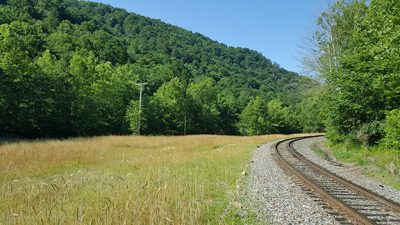Front Porch Blog
Coal Mining Engineering Services, a local company, contracted with C&S Construction to do the demolition and reclamation work while the Upper Tennessee River Roundtable, a nonprofit organization focused on the area’s water quality, administered the funds to make the project happen. The Blackwood site is near Norton, Va., in Wise County, while the Blue Hole site is 1.7 miles north of Pennington Gap in Lee County, Va. Both sites involved the cleanup of abandoned steel loadouts and removing and revegetating lands scarred by mining. Virginia Department of Environmental Quality officials were on-site to make sure everything was kept in compliance.
Both coal loadouts did not fall under the permitting requirements of the Surface Mine Control and Reclamation Act as they purchased coal directly from mine operators but did not operate coal mines themselves. Because they were exempt from the federal surface mining law, when the coal tipples closed they were not subject to the same reclamation requirements of coal tipples directly affiliated with mining operations and were allowed to deteriorate, leaving behind rusty metal structures and land scarred by mining. They also did not meet the pre-1977 qualification for Abandoned Mined land funding as both tipples operated after that time frame. As such this class of tipple fell in between the cracks for regulatory clean up.
Reclamation of the sites was eventually able to be funded through a process known as Supplemental Environmental Project. This allows water quality violators to voluntarily take on a environmentally beneficial project in an area in which they have been found guilty of violating the Clean Water Act in lieu of paying the penalty fees associated with their violation. The Supplemental Environmental Project may only happen in addition to the clean up of the situation that caused the violations and must be approved by both the EPA and the Department of Justice.
Both Blackwood and Bluehole were funded from SEP settlement money that resulted from the Kelly Branch selenium case (CIVIL ACTION NO. 2:12cv9) in which the Southern Appalachian Mountain Stewards, Appalachian Voices, and the Sierra Club brought a civil action against A & G Coal Corporation. According to the terms of the 2015 settlement agreement, A & G had to install selenium treatment ponds and pay $252,000 to Upper Tennessee River Roundtable for the purpose of cleaning up the two tipples.
“These abandoned tipples are eyesores, and are another example of the legacy coal mining has left this region,” says Jane Branham of the Southern Appalachian Mountain Stewards.
Now the sites are cleaned up, and where there was once rusty metal and coal waste eroding into the streams, there are now grassy fields.
PREVIOUS
NEXT

Leave a comment
Your email address will not be published. Required fields are marked *



Leave a Comment